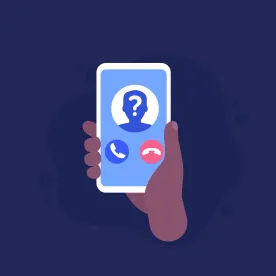It was inevitable following the big amendment to the FTSA that Plaintiff’s lawyers were going to begin focusing on the Oklahoma Telephone Solicitation Act.

Less foreseeable, however, is the trend by Plaintiff’s lawyers toward pursuing a new theory under section 501.059(8)(b) of the Florida Act (and the corollary OTSA provision) related to callability of numbers displayed on caller ids.
For the uninitiated, FTSA Section 501.059 (8)(b) and Oklahoma Title 15 Section 775c.3 each generally make it unlawful to fail to transmit accurate caller ID information and requires that a seller or marketer can actually be reached via telephone at any number transmitted on the caller ID.
This seems fine and good because all legitimate businesses will easily be able to meet these requirements right?
Well, not necessarily.
Under both the FTSA and OTSA a text message counts as a telephone solicitation. That means that the requirements of 501.059/775c.3 apply to SMS messages and not just to voice channel calls. And this is a BIG deal for a couple of reasons.
First, large volume texters commonly use shortcodes to assure connections. Shortcodes are six digit numbers provided by aggregators that assure higher throughput for SMS messages, but also come with very stringent standards. For instance a company generally cannot obtain a shortcode unless they meet CTIA guidelines, have consent for every message they send, include double opt in capabilities, and provide stop functionality with every message. In short, shortcode messages are likely desirable by the consumers that receive those messages.
For all their benefits, the one thing about shortcodes– they cannot receive inbound calls. So the only way to communicate with a shortcode message is via text.
Now rather obviously, the state legislatures in Oklahoma and Florida were not thinking about text messages when they drafted 501.059/775c.3–they were thinking about phone calls and assuring consumers can call businesses back at numbers used to call them. Makes sense and that is a laudable goal.
But they infused ambiguity into their statutes by conflating texts and calls in some sections of the statutes and not cleaning it up in the sections related to caller identification requirements. Not good.
Mercifully, the issue is pretty easy to cut through in the case of shortcodes. The statutory provisions read as follows: If a telephone number is made available through a caller identification service as a result of a telephonic sales call, the solicitor must ensure that telephone number is capable of receiving telephone calls and must connect the original call recipient, upon calling such number, to the telephone solicitor or to the seller on behalf of which a telephonic sales call was placed.
Now you can pretty much stop reading after the bolded section. The requirement that a phone number be callable is limited to–wait for it–telephone numbers. And a shortcode is not a telephone number. So… there you go. The entire theory that a shortcode must be callable fails because a shortcode is not a telephone number to begin with.
Per Wikipedia: Short codes, or short numbers, are short digit sequences, significantly shorter than telephone numbers, that are used to address messages in the Multimedia Messaging System and short message service systems of mobile network operators.
Since they are shorter than telephone numbers they are… not telephone numbers.
But that’s hasn’t stopped a huge volume of new OTSA/FTSA suits from being filed arguing that a Plaintiff can sue anytime they receive a text from a shortcode. And this is just preposterous in my view.
So that’s the GOOD news here–the “I can’t call back the number that texted me” theory is frivolous in the context of a shortcode. These cases should go nowhere and I encourage folks to fight them rather than settlement them so that they go away once and for all.
But let’s get to the bad.
The theory is less frivolous in the case of 10DLC text messages. Those numbers are–at least seemingly–telephone numbers (although the argument can be made that they are not telephone numbers either since they are not assigned to a telephone service and but only registered for SMS communication–which is an information service under the Communications Act.)
So this poses a challenge for large volume texters–what can be done?
Well, first let’s re-visit the requirements of the statutes.
First, to comply with the statutes, a Company has to transmit the “originating telephone number,” which I don’t see as a problem.
Second, a company has to transmit “the name of the telephone solicitor” or “the name of the seller on behalf of which a telephonic sales call is placed.” So the sender can use its own name or the seller’s name in transmitting messages, although it is unclear precisely how this requirement plays out in the context of a text message when no caller ID displays the name on a message–yet one more reasons why this theory is a square peg, round hole situation.
Third, the telephone number displayed “must be capable of receiving telephone calls” and “must connect… to the telephone solicitor or to the seller on behalf of which a telephonic sales call was placed.” So the phone number must “connect” to somebody—either a marketer or a seller.
It is this last requirement that is driving the litigation. And there are several responses. As already noted in the shortcode context, a shortcode is not a telephone number. And in the context of 10DLC the number may also not be a telephone number. Further, the statute requires that a caller identification service be in use and it is far from clear that SMS messages utilize any such service. Further, even assuming both of these theories can be surmounted, the fact that a 10DLC number can receive text messages–assuming it can–demonstrates that the statute has been complied with– if a text message is a telephone solicitation it follows that it is also a “telephone call” for purposes of these sections.
Still though none of these theories have been tested as the volume of cases filed has far outpaced the ability of courts to adjudicate them and that is the UGLY news here– we may have to wait (and suffer) through dozens more cases being filed before we have clear guidance from the Courts that the Czar was right all along, which of course I am.




 />i
/>i
